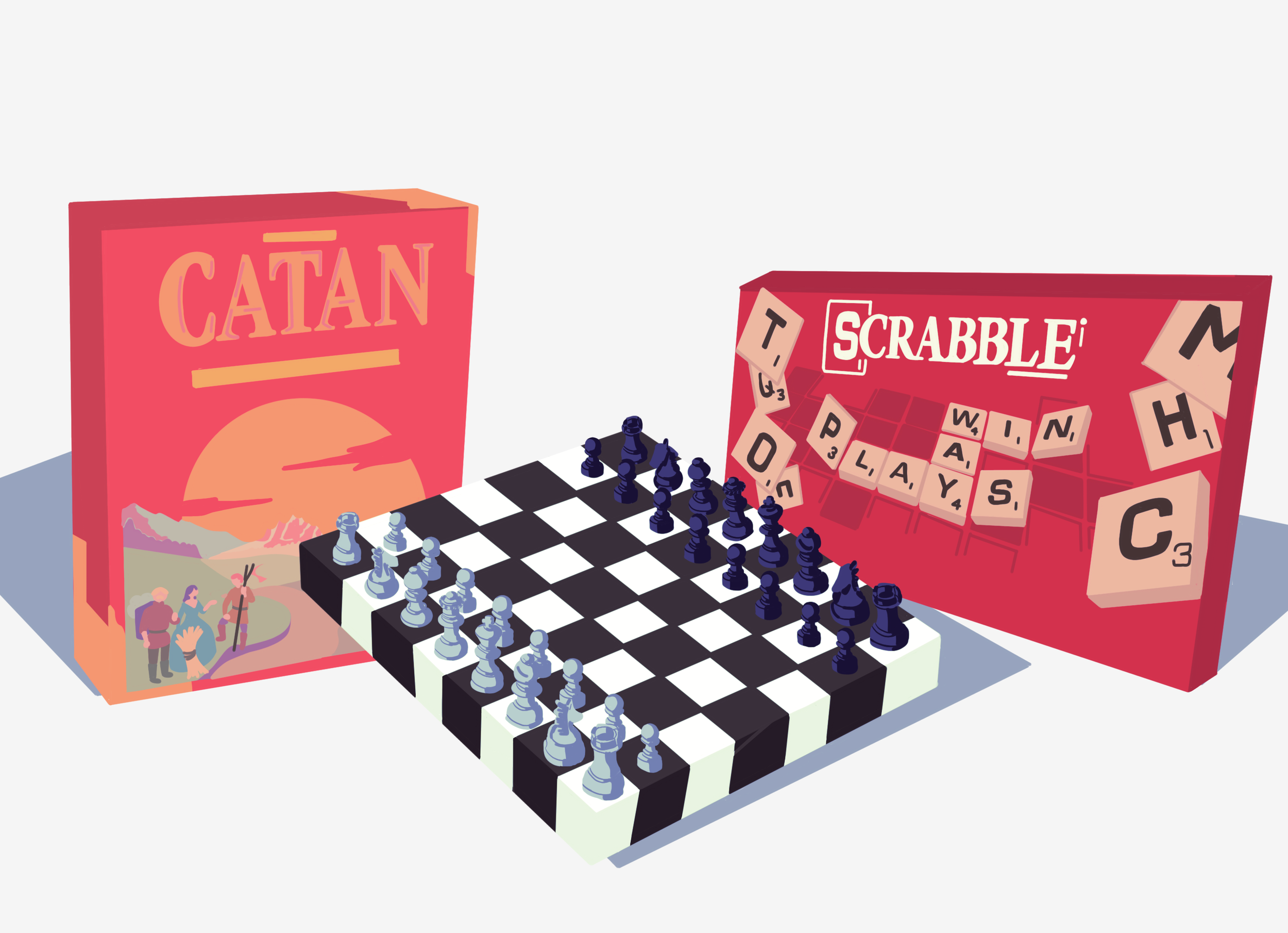The Magic of Board Games
By: Honor Tamminga
Illustrated by: Carla Cieza
Twilight Imperium (Fourth Edition) is likely the largest board game you will ever see. With 2,724 components and a rule book of 72 pages, it is no wonder that merely learning the game can take up to two or three hours. Playing it takes days.
What kind of person would dedicate so much time and effort just to play a game?
Malachi Tamminga, board game enthusiast and senior mechanical engineering student at George Fox University (GFU), calls board games “the ultimate art form,” saying they bring together visual, linguistic, and mechanical art. And of course, the narrative element is perhaps the most fundamental characteristic of games.
Board gamers use the term “the magic circle” to describe board gaming today. “The magic circle” is essentially how board games are played. Everyone playing a particular game agrees to a set of rules and they become a part of the world in which the game is set. Together, they step into “the magic circle.”
Each board game has a different sort of “magic circle.” Twilight Imperium is centered on intergalactic politics. The Mind, another popular board game, consists of a mere 100 cards, as opposed to Twilight Imperium’s 2,724 components, and is to be played in complete silence. Pandemic, on the other hand, is a cooperative game where the players work together to eradicate various diseases that are threatening humankind.
Board games vary greatly, but all of them require that players put aside everything else and enter into what Nick Willis, chair of mathematics at GFU, calls a “microcosm of life.” There, they are free to make mistakes, learn, have fun, and, most of all, be together. Willis said that “the goal of board games is [...] to be with people.”
Illustrated by Carla Cieza.
Board games bring individuals into a world that has been expertly designed, and there, they can write their own stories.
In today’s world, where people find themselves looking at their screens more than ever before, the amount of personal interaction that board games offer is increasingly important.
Willis remembers playing games with his great-grandmother when he was a child. She loved games, and the two would often sit down to play Chinese Checkers. “You have a great move” she would tell him, and Willis would stare at the board trying to figure it out.
Since then, Willis has continued to collect and play board games. Now, he enjoys playing with his daughters. When he wants to get competitive, he plays games with a group of other GFU faculty members. He has even helped one professor, Ben Guidice, associate professor of civil engineering, test-run Guidice’s own board game designs.
Unfortunately, the average GFU student is somewhat less enthusiastic about board games. Isabel Olson, vice-president of GFU’s Board Game Club, says that the club only hosts about seven students each week.
“[Board games] are really fun,” Olson said. “I don’t see why people wouldn’t want to play them.” For Olson, the perks are self-evident.
Especially following the COVID-19 pandemic, during which so many were isolated, an activity that involves such a high-level of social interaction is exactly what many people feel they need. Board games allow people to enjoy time--from 30 minutes to several hours--in each others’ company. They bring people into a world where they create a story over which they have some control.
At GFU, board games are not the most popular activity. But people like Malachi Tamminga, Nick Willis, and Isabel Olson have learned to prize the benefits that board games offer. As a school that values ambition, creativity, and community, perhaps students will also learn to put in the hours to play board games so that they, too, might be able to enter into the magic circle.
Hooked on the idea of board games? Reach out to Isabel Olson, iolson21@georgefox.edu to learn more about GFU’s Board Game Club.

